Lydenburgia cassinoides
Lydenburgia cassinoides N.Robson
Family: Celastraceae
Common names: Sekhukhuni bushman's tea (Eng.); sekhukhuni-boesmanstee (Afr.); mohlolodi (Northern Sotho)
SA Tree No: 406
Introduction
Sekhukhuni Bushman’s Tea is a medium sized tree, occurring in bushveld in Sekhukhuneland and Lydenburg, which showcases its distinctive cream to yellow flowers from early to mid-summer.
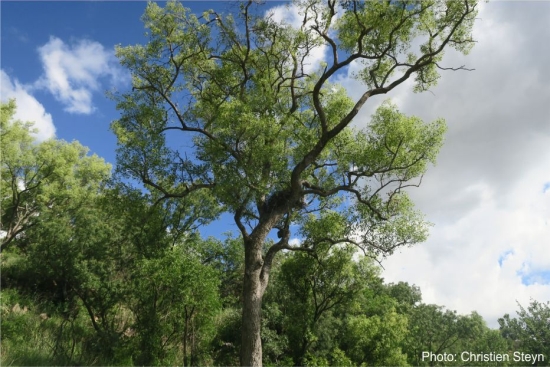
Fig. 1. Lydenburgia cassinoides in its natural habitat. Photo Christien Steyn
Description
Description
Lydenburgia cassinoides is a shrub or medium sized tree up to 13 m tall, with roughly fissured, corky, dark brown bark on the main stem. Branchlets are green, becoming purple-brown as they mature. The leaves are leathery, opposite, broadly elliptic-ovate, ranging from 25-85 x 13-55 mm, shiny dark green on the upper surface, dull and paler below; interpetiolar scar is absent, margins serrated. Flowerheads are axillary, up to 120 mm long and flowers are small, cream to yellow, blooming from early to mid-summer (November to January). Fruit is a narrowly ovate, 3-valved capsule with a pointed tip, ±9 mm long, splitting to release 3 or 4 elongated, 3-sided, wingless seeds, green-brown when mature, with a small white aril at the base.
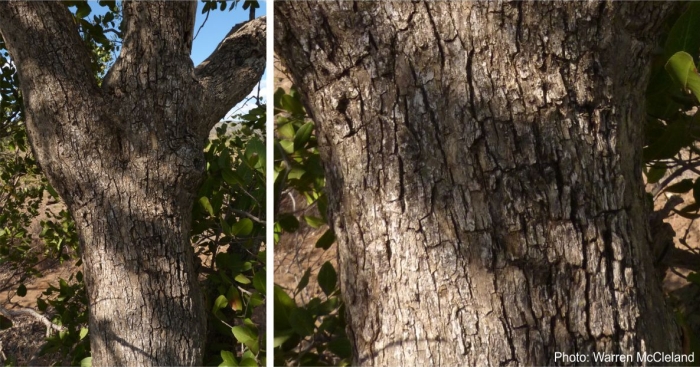
Fig. 2. Lydenburgia cassinoides rough, corky, fissured bark. Photo Warren McCleland
Conservation Status
Status
Lydenburgia cassinoides is assessed as Near Threatened (NT) according to the Red List of South African Plants. Although known from more than 10 locations and subpopulations that are not severely fragmented, these populations are gradually declining due to harvesting and habitat degradation. Lydenburgia cassinoides is listed as a protected tree under the National Forest Act, 1998 (Act no.84 of 1998).
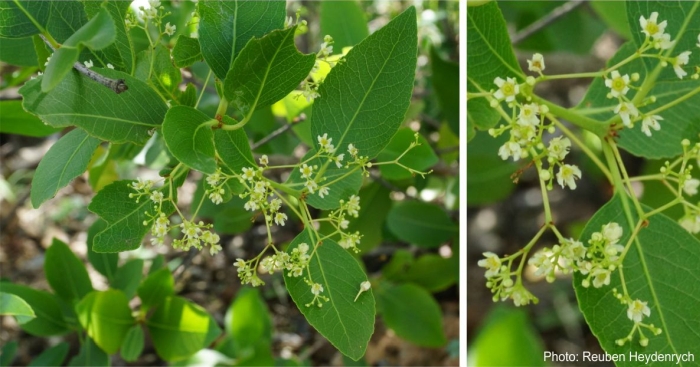
Fig. 3. Lydenburgia cassinoides small 5-petalled flowers in lax bunches. Photo Reuben Heydenrych
Distribution and habitat
Distribution description
Lydenburgia cassinoides is a South African endemic distributed along the south-eastern parts of Limpopo and northern Mpumalanga, ranging from Roosenekal to the Strydpoort Mountains, growing in bushveld, in ravines, on rocky hillsides and on riverbanks, often in groves, in full sun and tolerant of moderate frost.

Fig. 4. Lydenburgia cassinoides ripening fruits Left and Right an open capsule showing seeds ready for dispersal. Photos Warren McCleland
Derivation of name and historical aspects
History
The genus Lydenburgia is named after Lydenburg, a small town in Mpumalanga Province, where the type specimen was collected. The species is named cassinoides because the tree has similar characteristics to the genus Cassine. The genus Lydenburgia comprises of only 2 species, which are both South African endemics, the other being L. abbottii, commonly known as the Pondo Bushman’s Tea, occurring on the KwaZulu-Natal and Eastern Cape border, in riverine forests. Both species are protected under the National Forest Act, 1998 (Act No. 84 of 1998). Both species were previously included in the genus Catha but were placed in their own genus because they have anatomical differences in their bark and wood, their leaves have very different chemical properties and their seeds are wingless, when compared with Catha. Lydenburgia cassinoides is called Catha transvaalensis in the older literature.
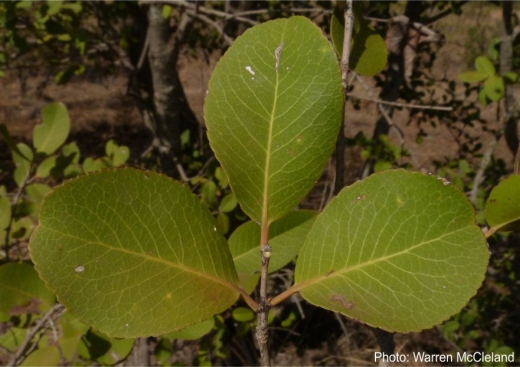
Fig. 5. Lydenburgia cassinoides ovate leathery leaves with short stalks. Photo Warren McCleland
Ecology
Ecology
Lydenburgia cassinoides flowers are pollinated by bees and the fruits are eaten by birds.
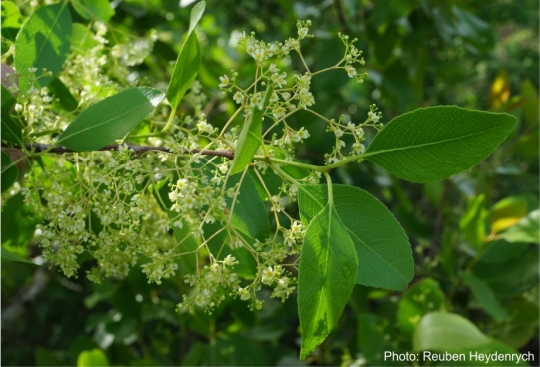
Fig. 6. Lydenburgia cassinoides flowers in axillary clusters. Photo Reuben Heydenrych
Uses
Use
The wood is used to make door posts and window frames, and the foliage is browsed by cattle. Goats nibble the trunk bark. Although there are not many known uses of this species in traditional medicine, the bark and leaves are reportedly used as a general medicine and the leaves are chewed or taken as a tea. A 2012 scientific study has indicated that leaf extracts of Lydenburgia cassinoides showed antimicrobial activity in the laboratory and that it is a safe and effective agent to treat fungal and bacterial infections.
Growing Lydenburgia cassinoides
Grow
Specific cultivation methods for Lydenburgia cassinoides are still unknown, however, the tree can be propagated like other members of the Celastraceae family, which grow easily from seed. Sow ripe seeds in a well-drained seedling mix immediately after harvesting, thereafter keeping them in a warm and moist environment. The seeds will begin germinating within 2 to 4 weeks. Apply fertilizer after transplanting seedlings into trays or bags. Members of the Celastraceae family are slow growing.
References
- Coates Palgrave, M. 2002. Keith Coates Palgrave Trees of southern Africa, edn 3. Struik, Cape Town.
- De Beer. H. 2018. Faunal and floral ecological assessment as part of the environmental assessment and authorisation process for the proposed Dwarsrivier Expansion Project, Limpopo Province. Section B: Floral assessment. SAS 218027.
- Heydenrych, R. 2019-01. Observation of Lydenburgia cassinoides iNaturalist. https://inaturalist.org/observations/124769714.
- McCleland, W. 2016-05. Observations of Lydenburgia cassinoides. iNaturalist. https://inaturalist.org/observations/93249950 & https://inaturalist.org/observations/93248489.
- Nichols, G. 2005. Growing rare plants: a practical handbook on propagating the threatened plants of southern Africa. Southern African Botanical Diversity Network Report No. 36.
- Palmer, E. & Pitman, N. 1972. Trees of southern Africa, vol. 2. Balkema, Cape Town.
- Sakong, B., Ahmed, A.S., Mcgaw, L. & Eloff, J.N. 2012. Isolation and characterization of compounds from Calodendrum capense and Lydenburgia cassinoides with antimicrobial potential against opportunistic pathogens. South African Journal of Botany 79.
- Schmidt, E., Lötter, M. & McCleland, W. 2002. Trees & shrubs of Mpumalanga and Kruger National Park. Jacana, Johannesburg.
- Siebert, S.J., Van der Merwe, I.J., Stehle, T. & Victor, J.E. 2005. Lydenburgia cassinoides N.Robson. National Assessment: Red List of South African Plants version 2020.1. Accessed on 2022/10/25.
- South African Government. National Forests Act: List of protected tree species. www.gov.za/documents/national-forests-act-list-protected-tree-species-7. Accessed 25/10/2022.
- Steyn, C. 2022-01. Observation of Lydenburgia cassinoides. iNaturalist. Online. https://inaturalist.org/observations/133316355.
Credits
Ntsakisi Masia
Millennium Seed Bank Partnership, Thohoyandou
February 2023
Acknowledgements: the author thanks Warren McCleland, Reuben Heydenrych and Christien Steyn for the images.
Plant Attributes:
Plant Type: Shrub, Tree
SA Distribution: Limpopo, Mpumalanga
Soil type: Sandy, Loam
Flowering season: Early Summer
PH:
Flower colour: Green, Cream, Yellow
Aspect: Full Sun
Gardening skill: Average
Special Features:
Horticultural zones







Rate this article
Article well written and informative
Rate this plant
Is this an interesting plant?
Login to add your Comment
Back to topNot registered yet? Click here to register.